#lusotitan
Explore tagged Tumblr posts
Text

The Mists of Lourinhã Eousdryosaurus encounters Lusotitan.
#my art#paleoart#sciart#dinosaur#lusotitan#eousdryosaurus#sauropod#ornithopod#herbivore#lourinha formation#portugal#jurassic#mesozoic#extinct#animal#nature#prehistoric
387 notes
·
View notes
Text

Sad Lusotitan
6 notes
·
View notes
Text













PREHISTORIC ANIMALS (miscellaneous)
Various, random reconstructions of prehistoric animals of all eras: Parasaurolophus, Berberosaurus, Cyamodus, Bungartius, Kronosaurus, Kyhytysuka, Lusotitan, Paraceratherium, Megistotherium, Murusraptor, Zhuchengtyrannus, Atopodentatus, Stratodus
__
Youtube channel
Instagram
Prints and more paleomerch
#paleoart#natural history#dinosaurs#paleontology#scientific illustration#paraceratherium#parasaurolophus#kyhytysuka#stratodus#marine reptiles
71 notes
·
View notes
Text

In The News: First look at Walking With Dinosaurs II (2025)


Earlier this month, BBC released the first images of the upcoming return of the hit series, Walking with Dinosaurs, which was first announced back in June of 2024. While it's easy to compare upcoming dinosaur projects to other successful paleomedia, large productions like Prehistoric Planet (2022) and Walking with Dinosaurs (1999) set the bar high in terms of what people expect from a modern dinosaur documentary. Walking with Dinosaurs II is it's own project, over 20 years after the first series, and we still have much to see.

So far the models, in my opinion, are looking really nice. They're the best Albertosaurus I've seen on screen (no shrinkwrapping or reused Tyrannosaurus models here). The lips look a bit odd from some angles (though they properly cover the teeth) but overall the skull is very accurate. This is perhaps due to artist Henry Sharpe being involved in production. The Pachyrhinosaurus looks great as well (and it's unique enough from the design of the P. canadensis seen in Prehistoric Planet), though it's hard to determine the exact species.
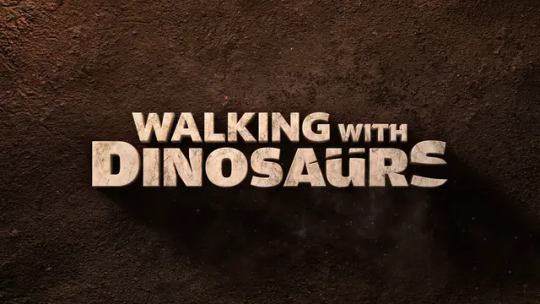
Walking With Dinosaurs is set to be six episodes long, each with a length of 60 minutes.
"Arriving in 2025, each episode of Walking With Dinosaurs will tell the dramatic story of an individual dinosaur whose remains are currently being unearthed by the world’s leading dinosaur hunters. Thanks to cutting-edge science, experts can reveal how the creatures lived, hunted, fought, and died more accurately than ever before." - The Hollywood Reporter
So far we've only seen these two species, though other dinosaurs have been mentioned to be featured in the series:
"Other stories being told include that of the herbivore Lusotitan, which lived in Portugal, and would have been seeking a mate; the Spinosaurus, the largest carnivorous dinosaur so far discovered, found in Morocco; and a Triceratops in North America, which the programme will show trying to battle a Tyrannosaurus." - Hannah Roberts, PA Entertainment Reporter, Yahoo! News
Surviving Earth, another anticipated paleo-documentary (produced by Impossible Pictures), has since been pushed back to 2026 - though hopefully this gives more time for the final project to be perfected before public release. Stay tuned for more reviews as we learn more about new media!
#paleoblr#paleomedia#dinosaurs#walking with dinosaurs#2025#2026#documentaries#news#albertosaurus#pachyrhinosaurus#paleontology#feature
22 notes
·
View notes
Text
SISTER FORMATIONS: MORRISON, LOURINHA AND TENDAGURU
Back in the Late Jurassic Period, North America, Europe and Africa were next door neighbors.

This is reflected in the similarity of the lithology, and fauna of the rocks. In North America, we have the Morrison Formation, in Europe we have the Lourinha Formation, and in Africa we have the Tendaguru Formation. All of these are contemporaneous or sister formations.
Stratigraphy
The Tendaguru Formation is approximately 177 m thick and broken up into five members: Lower Dinosaur Member (cross-bedded, fine-grained sand and siltstone w/interbedded clay), Nerinella Member (trough cross-bedded and massive sandstone indicating a tidal channels, sandbars and beaches),

Middle Dinosaur Member ( ripple, cross-bedded, fine-grained calcareous sandstone and siltstone and massive to crudely bedded siltstone and claystone indicating tidal flats and lagoons),
Indotrigonia Africana Member (calcite cemented sandstone, conglomerate, thin claystone, and siltstone with sandy limestone indicating tidal and deltaic channels),
and the Upper Dinosaur Member (ripple, cross-bedded, fine-grained sandstone and siltstone with interbedded claystone and micriitic carbonates indicating tidal flats).
The Lourinha Formation is about 200 to 1000 meters thick and is broken into about 5 members: Praia da Amoreira Member (massive mudstone with meter thick sandstone lenses and calcrete layers indicating a meandering river system),
the Porto Novo Member (cross-bedded sandstone indicating a deltaic system), the Praia Azul Member (marl and mudstone indicating brief marine transgression),
and the Santa Rita and Assenta Members (mudstone, caliche, shelly carbonates near the top indicating a landward side of a deltaic system) which are equivalent members from different basins.
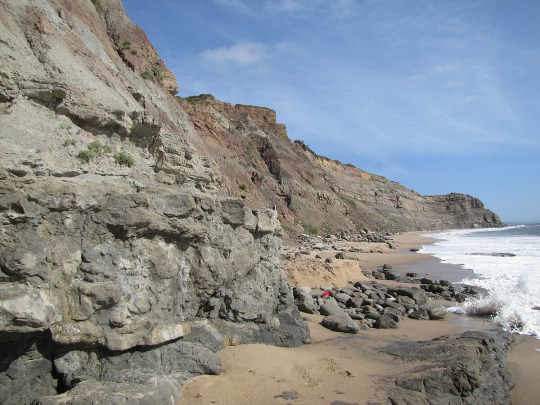
The Morrison, as stated previously, is about 200 m thick and consists of 11 different members. I will not go into detail about them again but it should be noted that the formations are approximately the same thickness and made of primarily sand, silt and mudstone.
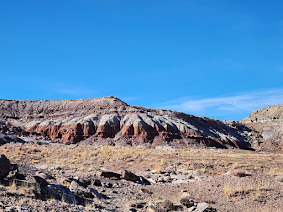
DINOSAURS
Now for the other fun part: the dinosaur fauna. There are some dinosaurs that are shared between two or all of the formations. These include Ceratosaurus nasicornis in the Morrison and a possible Ceratosaurus in the Tendaguru
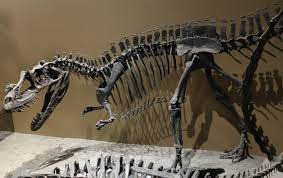
and in the Lourinha, Torvosaurus tanneri in the Morrison, Torvosaurus gurneyi in the Lourinha, and a possible Torvosaurus species in the Tendaguru,
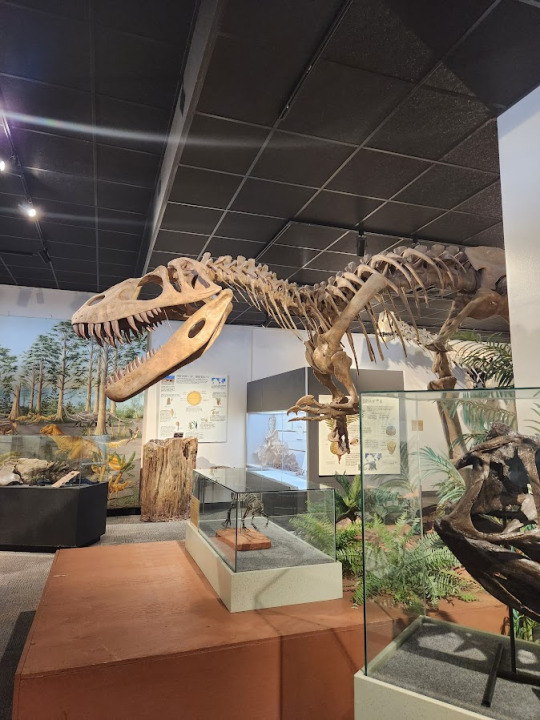
Allosaurus fragilis in the Morrison and Allosaurus europaeus in the Lourinha,

Dryosaurus altus in the Morrison and a possible Dryosaurus species in the Lourinha,

Miragaia longicollum in the Lourinha and possibly Miragaia longispinus in the Morrison. Though if that's true, the genus would be Alcovosaurus because that was named first.

And then there are the dinosaurs that were similar to each other in each formation. Filling in the niche or living alongside Dryosaurus was Dystalotosaurus of the Tendaguru,
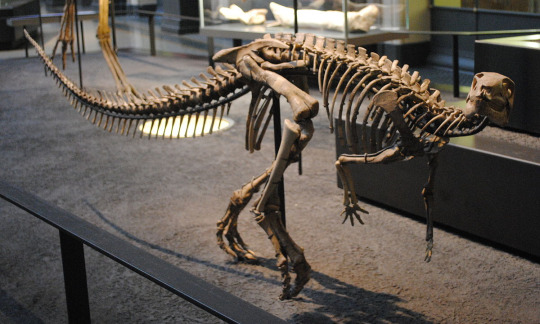
Eudryosaurus in the Lourinha, and Nanosaurus in the Morrison.
There's Draconyx in the Lourinha and Camptosaurus in the Morrison as early iguanodonts.

Kentrosaurus in the Tendaguru, Dacentrurus in the Lourinha and Stegosaurus and Hesperosaurus in the Morrison are the main stegosaurs.
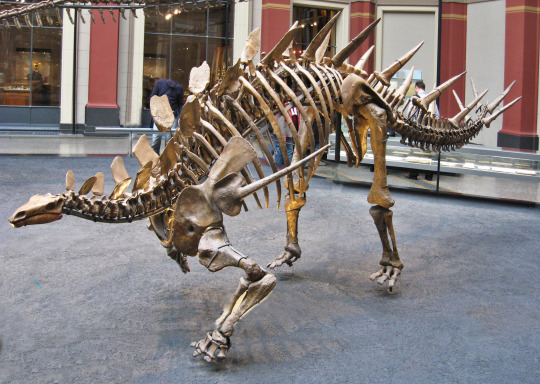
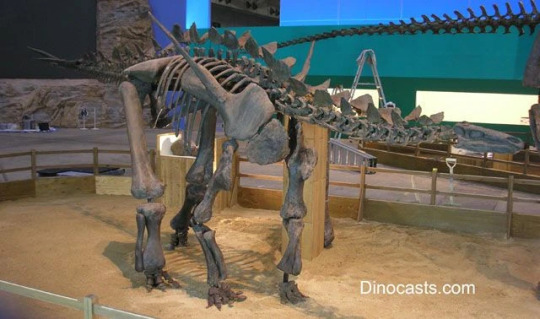

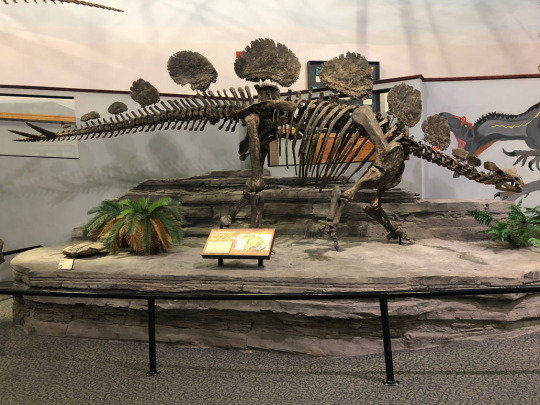
For ankylosaurs, there is Dracopelta in the Lourinha and Mymooropelta and Gargoyleosaurus in the Morrison.

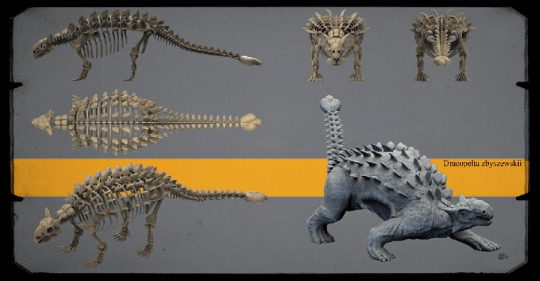
Then there's Dicraeosaurus of the Tendaguru and Suuwassea of the Morrison.

Giraffatitan of the Tendaguru, Lusotitan of the Lourinha and Brachiosaurus of the Morrison all represent brachiosaurs.
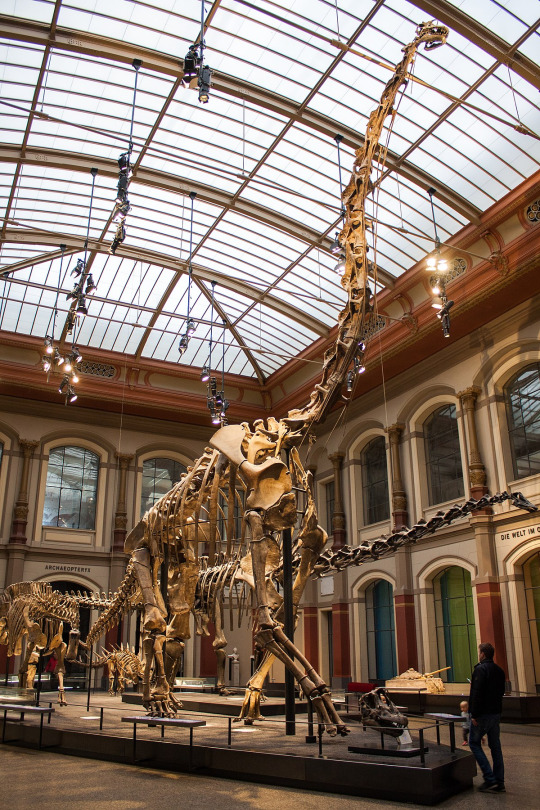
Janenschia of the Tendaguru and Haplocanthosaurus of the Morrison represent early sauropods.
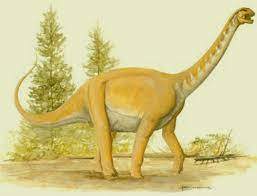
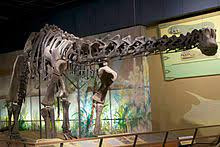
Tendaguria of the Tendaguru and Zby of the Lourinha are even earlier sauropods.
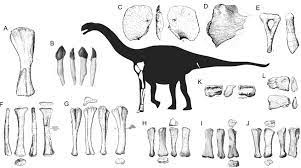
Torneiria of the Tendaguru and Deinheirosaurus of the Lourinha are the diplodocids that match up with the bagillion in the Morrison.
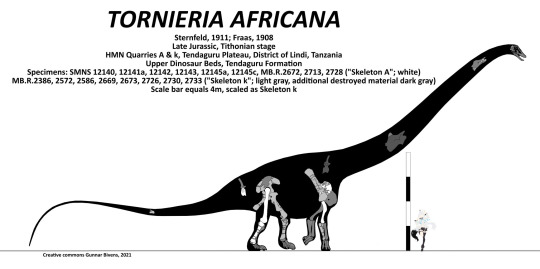
Lourinhasaurus is the camarasaurid representative of the Lourinha.
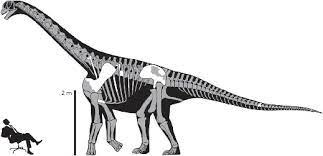
The Tendaguru and the Lourinha have early carcharadontosaurs in the forms of Veteruristisaurus and Lusovenator.
Lourinanosaurus is the European equivalent of Marshosaurus in the U.S.

And Elaphrosaurus of the Tendaguru is the small to medium-sized equivalent of Tanycoalgreus in the Morrison.
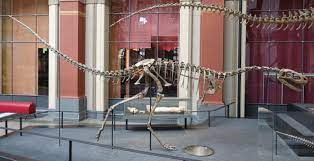

This was a ton of info so if you want it more broken down, message me! I am happy to walk you through it all! Enjoy your weekend!
#paleontology#dinosaur#fossils#geology#lithology#north america#europe#africa#morrison formation#lourinha formation#tendaguru formation#science#allosaurus#torvosaurus#ceratosaurus#stegosaurus#brachiosaurus#giraffatitan#miragaia#kentrosaurus#dacentrurus#mymooropelta#dracopelta#gargoyleosaurus#dryosaurus#sandstone#mudstone#limestone#siltstone#stratigraphy
143 notes
·
View notes
Text
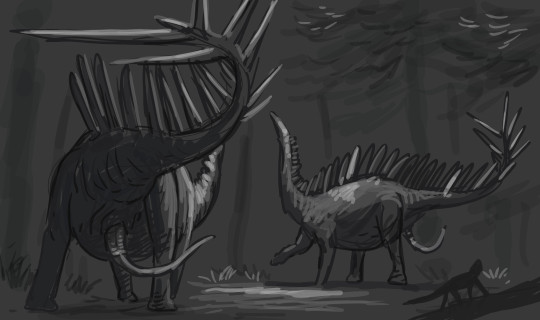
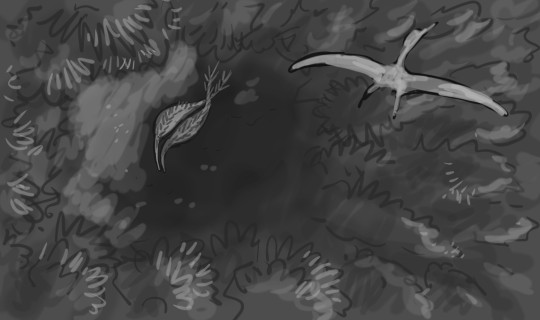
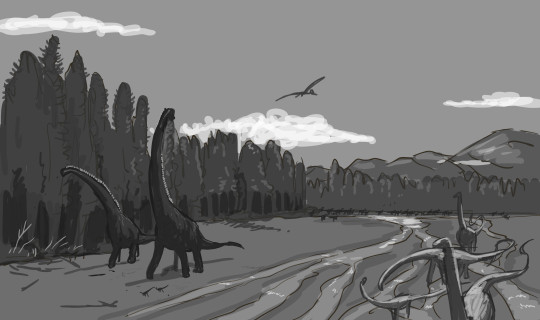
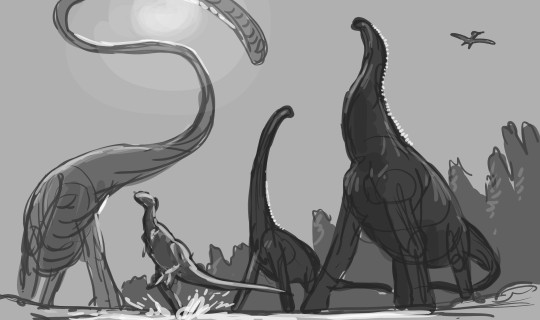
Second #JurassicJune post!
Oops, turns out they were both male, but Miragaia doesn't seem to mind. We continue our journey over the lands of the Lourinhã Formation, with some Lusotitan and Dinheirosaurus/Supersaurus patrolling the floodplains. A Draconyx herd in the background.
#sciart#paleoart#paleostream#palaeoblr#dinosaur#dinosaurs#jurassic#stegosaur#lourinha#portugal#jurassicjune#pride month
271 notes
·
View notes
Text
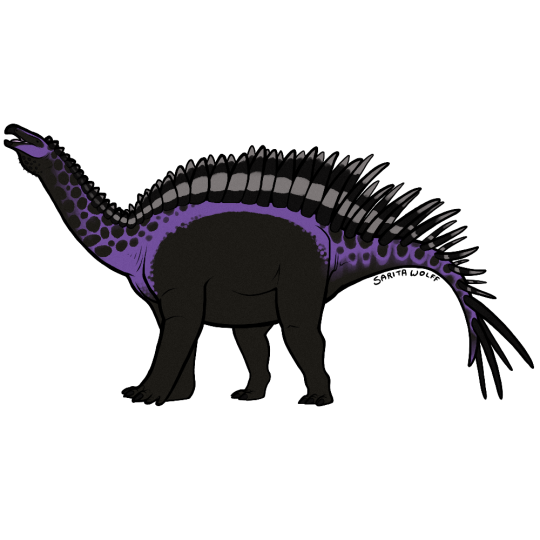
#Archovember Day 12 - Miragaia longicollum
In the Late Jurassic of Portugal lived a peculiarly long-necked stegosaur, Miragaia longicollum. Miragaia had at least 17 vertebrae in its neck, more than most sauropods! Its fossil was found during the construction of a new road and, unfortunately, the back half of the skeleton was likely destroyed in the process. 13 bony plates and one tail spike were found scattered, so Miragaia’s plate and spike configuration is mostly unknown. Still, its long neck is a distinguishing feature that sets it apart from any other known stegosaur.
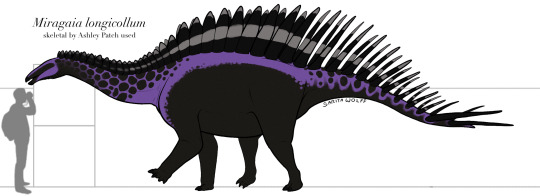
Miragaia was long, graceful, large, but more lightweight than most other stegosaurs, at an estimated 2 metric tons (2.2 short tons). Its long neck could have been a means to browse at levels other herbivores weren’t exploiting, and/or it arose due to sexual selection and was used for display. Like other stegosaurs, it may have also been able to stand on its hind legs to reach even higher levels of browse.
Late Jurassic Portugal in many ways mimicked the Morrison Formation of Wyoming, USA. Miragaia would have lived alongside other stegosaurs like its close relative Dacentrurus. It would have also shared space with the ankylosaur Dracopelta, early ornithopods like Draconyx and Dryosaurus, and sauropods like Lourinhasaurus and Lusotitan. It would have been hunted by the European Allosaur, Allosaurus europaeus, and the European Torvosaur, Torvosaurus gurneyi, as well as other theropods like Lourinhanosaurus.
(I previously made my Dacentrurus purple on a whim, so I just decided to follow that trend with Miragaia here. All my stegosaurs are pink or purple lol)
#my art#SaritaDrawsPalaeo#Miragaia longicollum#Miragaia#stegosaurid#stegosaur#thyreophorans#ornithischians#dinosaurs#archosaurs#archosauromorphs#Archovember#archovember2023
62 notes
·
View notes
Text
Ophiussasuchus: The Lourinhã Goniopholid
Not even a full three weeks into 2024 and we already have three new pseudosuchians, personally, I'm pretty satisfied with this developement.
The newest one is Ophiussasuchus paimogonectes ("crocodile from Portugal that swims at Paimogo beach"), a goniopholid Neosuchian from the Late Jurassic Lourinhã Formation of Portugal.
Ophiussasuchus is known from a single specimen, but one thats quite complete, preserving almost the entirety of the skull in 3D and only missing a chunk of the right side of the end of the skull.


The skull of Ophiussasuchus is mesorostine and platyrostral. In simple terms, its of medium length and width and has a flattened skull. Platyrostry is pretty much the standard for goniopholids, but mesorostry is more noticable in that there are some other genera in the group with short snouts (like Nannosuchus) and long snouts (like Anteopthalmosuchus and Hulkepholis). Another more general feature of this animal is that it was a medium-sized member of its family, with estimates suggesting a length of somewhere between 2.5 to 3 meters.
As often the case, the devil lies in the detail. Ophiussasuchus is thought to have been most closely related to Hulkepholis and Anteophthalmosuchus, two goniopholids from the Early Cretaceous of Europe. However it displays several features that indicate an intermediate position. A nasopharyngeal duct is visible on the palate, but in its closest relatives the duct is enclosed and in the more basal American forms the duct is more open. Interestingly, the palate also features small palatal fenestrae, which are not seen in any other goniopholids aside from Siamosuchus. Interestingly, these two features are not just leftovers from its ancestry. Analysis suggest that the palate of the ancestor of Ophiussasuchus likely looked like that of the other European taxa, which in turn means that this anatomy was reversed in Ophiussasuchus. It's unclear if Ophiussasuchus simply lost that anatomy or if it actually converged with the more basal forms.
Anteophthalmosuchus and Hulkepholis, longirostrine relatives of Ophiussasuchus from the early Cretaceous. Figure from Arribas et al. 2019

Ophiussasuchus lived during the Late Jurassic (Kimmeridgian to Tithonian) in the Lourinhã Formation of Portugal. The Lourinha is perhaps most famous as "Europe's Morrison", sharing much fauna with its American counterpart. Just as an example both formations feature Allosaruus, Torvosaurus and some animals found in the Lourinhã Formation are at the very least related to American forms. Examples for the latter are Lusotitan and Brachiosaurus, Dinheirosaurus and Supersaurus as well as Miragaia and Alcovasaurus.
Goniopholids are also present in both formations, the Morrison featuring Amphicotylus, Eutretauranosuchus and Diplosaurus and Lourinhã being home to Ophiussasuchus.
Reconstruction below by Simão Mateus and Camilo Pineda
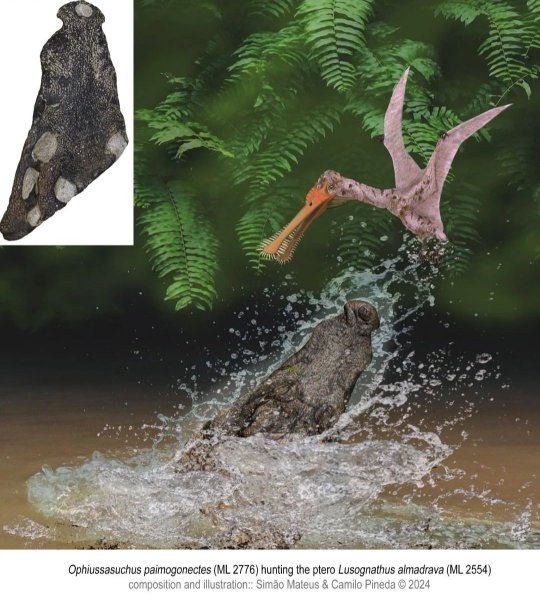
Obligatory wikipedia and paper links
Ophiussasuchus - Wikipedia
A new Portuguese goniopholidid (palaeo-electronica.org)
#Lourinhã Formation#goniopholidae#pseudosuchia#croc#crocodile#ophiussasuchus#prehistory#jurassic#portugal#paleontology#palaeoblr#long post
33 notes
·
View notes
Text








Brachiosaurus
(temporal range: 154-150 mio. years ago)
[text from the Wikipedia article, see also link above]
Brachiosaurus (/ˌbrækiəˈsɔːrəs/) is a genus of sauropod dinosaur that lived in North America during the Late Jurassic, about 154 to 150 million years ago.[1] It was first described by American paleontologist Elmer S. Riggs in 1903 from fossils found in the Colorado River valley in western Colorado, United States. Riggs named the dinosaur Brachiosaurus altithorax; the generic name is Greek for "arm lizard", in reference to its proportionately long arms, and the specific name means "deep chest". Brachiosaurus is estimated to have been between 18 and 22 meters (59 and 72 ft) long; body mass estimates of the subadult holotype specimen range from 28.3 to 46.9 metric tons (31.2 and 51.7 short tons). It had a disproportionately long neck, small skull, and large overall size, all of which are typical for sauropods. Atypically, Brachiosaurus had longer forelimbs than hindlimbs, which resulted in a steeply inclined trunk, and a proportionally shorter tail.
Brachiosaurus is the namesake genus of the family Brachiosauridae, which includes a handful of other similar sauropods. Most popular depictions of Brachiosaurus are in fact based on Giraffatitan, a genus of brachiosaurid dinosaur from the Tendaguru Formation of Tanzania. Giraffatitan was originally described by German paleontologist Werner Janensch in 1914 as a species of Brachiosaurus, B. brancai, but moved to its own genus in 2009. Three other species of Brachiosaurus have been named based on fossils found in Africa and Europe; two are no longer considered valid, and a third has become a separate genus, Lusotitan.
The type specimen of B. altithorax is still the most complete specimen, and only a few other specimens are thought to belong to the genus, making it one of the rarer sauropods of the Morrison Formation. It is regarded as a high browser, possibly cropping or nipping vegetation as high as 9 meters (30 ft) off the ground. Unlike other sauropods, it was unsuited for rearing on its hindlimbs. It has been used as an example of a dinosaur that was most likely ectothermic because of its large size and the corresponding need for sufficient forage, but more recent research suggests it was warm-blooded. Among the most iconic and initially thought to be one of the largest dinosaurs, Brachiosaurus has appeared in popular culture, notably in the 1993 film Jurassic Park.
8 notes
·
View notes
Note
Hello, do you have by change anything about the Lourinhanosaurus or the Lusotitan atalaiensis?
I tried to search your blog but I couldn't find anything, so wanted to check in
They're two species kinda unique to my country and I really like them
i haven’t heard of these two, but i’ll definitely look into them! they seem really neat! thank u for the suggestions :)
0 notes
Photo



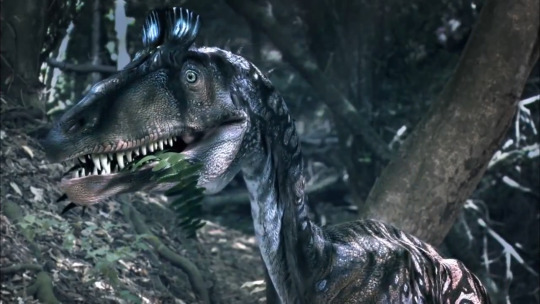






Top 10 dinosaurs of Dinosaur Revolution.
Bonus No. 1 non-dinosaur:

#dinosaur revolution#dinosaurs#shunosaurus#lusotitan#eoraptor#cryolophosaurus#dinheirosaurus#troodon#protoceratops#torvosaurus#tyrannosaurus rex#allosaurus#mosasaur#mine#q
28 notes
·
View notes
Video
youtube
Portugal during the late Jurassic was home to some of the most spectacular creatures to ever walk the Earth, from the colorful Draconyx to the enormous Lusotitan. But, this beauty was not without danger - fierce predators like Allosaurus and Torvosaurus also stalked these lands.
A short style experiment -- more like a brief ecology overview than a proper narrative short film.
#videos i made#short film#jurassic world evolution#dinosaurs#draconyx#allosaurus#supersaurus#miragaia#lusotitan#torvosaurus
1 note
·
View note
Photo

Is a genus of sauropod dinosaur that lived in North America during the Late Jurassic, about 154–153 million years ago. It was first described by American paleontologist Elmer S. Riggs in 1903 from fossils found in the Colorado River valley in western Colorado, United States. Riggs named the dinosaur Brachiosaurus altithorax; the generic name is Greek for "arm lizard", in reference to its proportionately long arms, and the specific name means "deep chest". Brachiosaurus is estimated to have been between 18 and 21 meters (59 and 69 ft) long; weight estimates range from 28.3 to 58 metric tons (31.2 and 64 short tons). It had a disproportionately long neck, small skull, and large overall size, all of which are typical for sauropods. Atypically, Brachiosaurus had longer forelimbs than hindlimbs, which resulted in a steeply inclined trunk, and a proportionally shorter tail. Brachiosaurus is the namesake genus of the family Brachiosauridae, which includes a handful of other similar sauropods. Most popular depictions of Brachiosaurus are in fact based on Giraffatitan, a genus of brachiosaurid dinosaur from the Tendaguru Formation of Tanzania. Giraffatitan was originally described by German paleontologist Werner Janensch in 1914 as a species of Brachiosaurus, B. brancai, but moved to its own genus in 2009. Three other species of Brachiosaurus have been named based on fossils found in Africa and Europe; two are no longer considered valid, and a third has become a separate genus, Lusotitan. The type specimen of B. altithorax is still the most complete specimen, and only a few other specimens are thought to belong to the genus, making it one of the rarer sauropods of the Morrison Formation. It is regarded as a high browser, possibly cropping or nipping vegetation as high as 9 meters (30 ft) off the ground. Unlike other sauropods, it was unsuited for rearing on its hindlimbs. It has been used as an example of a dinosaur that was most likely ectothermic because of its large size and the corresponding need for sufficient forage, but more recent research suggests it was warm-blooded. Among the most iconic and initially thought to be one of the largest dinosaurs, Brachiosaurus has appeared in popular culture, notably in the 1993 film Jurassic Park.
Herbivore
Brachiosaurus (c) Jurassic Park Art (c) reneg661
2 notes
·
View notes
Text

In The News: Trailer release for Walking With Dinosaurs II (2025)

It's been a very busy month for me (as I'll explain in a future post) though most recently - and to the excitement of just about the entire paleo-community - the first official trailers for Walking With Dinosaurs II have been released throughout this week! There is much to unpack, but for the time being here are my opinions on some of the new species we've seen so far: Carcharodontosaurus: We very briefly see a standown between two carcharodontosaurid theropods, most likely Carcharodontosaurus itself. Those hooked claws and the facial details all look great!

Spinosaurus: A bold decision indeed for any documentary to feature an animal notorious for so many anatomical changes throughout its history. Spinosaurus features heavily in the trailers and the models shown follow the "modern" look for the animal, complete with the 2022 crocodilian style paddle-shaped tail. Though it's one of the more historically "inconsistent" dinosaurs, we now have quite a lot of the skeleton preserved. I'm pretty fond of how WWD's Spinos look. A great blend of blend of weirdness and believability.



Triceratops: The lighting/CGI looks good, though the texture of the Trike's face is a bit odd (but still within what we know about its integument).



Edmontosaurus regalis: It's exciting to see the regalis species of Edmontosaurus appearing in a documentary! The more well known E. annectans of the Hell Creek Formation starred in the original Walking With Dinosaurs (1999) and Prehistoric Planet (2022/23) though E. regalis is unique in its own right. For starters, it has extensive soft tissues preserved around the skull and neck, sporting a rooster-like fleshy comb atop its head. Another detail I noticed when slowing down the trailer: forward-facing eyes! It is a very recent discovery for Edmontosaurus from last year, and one of the more unsettling...

Speaking of Hell Creek, the azdarchid (Quetzalcoatlus?) looks great! The anatomy is pretty much on-point, complete with that eery stilt-walking stance signature of large pterosaurs.

"He's right behind me, isn't he?"
Tyrannosaurus: While Rex seen back in 1999 was iconic and memorable, I think it's safe to say that the 2025 design is an upgrade (considering the original WWD Rex had some design elements that were last-minute afterthoughts).


I always loved the color scheme of the 1999 Rex, but looking back, the design is just rough.


I'm liking the new Rex (though the lips look a little off when the mouth is closed) and hopefully this means Torosaurus gets to return as well.

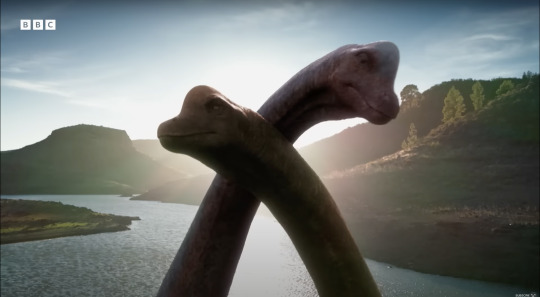
Lusotitan: A species that was confirmed last year but we didn't get a good look until now. Overall great looking sauropods (and no, I won't address the nasal structures seen in the trailer..).

Titanosaurs: More sauropods! I'm excited to find out what these ones are specifically. My wager is that they're Paralititan given that the environment is similar to those seen with the Carchs and the Spinos. The armored texture on the shoulders and back is a nice touch.

Utahraptor: Not much to say other than it looks stunning! The head is accurately rectangular (compared to other, more slender dromaeosaurids) and the body is stocky and muscular. I also like the patterning on the face and plumage. And it's got me really excited to a summertime job that I'll have to write about soon!


Gastonia: But it's Utahraptor's neighbor that really caught my eye: Gastonia. Just look at it! It's gorgeous. Easily one of the best armored dinosaurs I've seen in media. in 1999, Gastonia was nothing more than a background character. Now it seems to be in the spotlight, complete with new skin texture, upgrades to the skull/body anatomy, and a new armor arrangement! Also relevant in time for my summertime job, it has gotten me all the more excited about Utah's unique dinosaurs! Gotta say this is my favorite design in the trailers thus far (in terms of accuracy and aesthetics). So much to catch up on and look forward to! Stay tuned for much more paleo-related things going on in my life!
#iguanostalgia#walking with dinosaurs#walking with dinosaurs 2025#art#dinosaurs#paleoart#paleoblr#paleomedia#reviews#media reviews#paleontology#documentaries#documentary#2025#media#tv#tv series
14 notes
·
View notes
Text
"Eine klassische Jagdszene im Jura: Allosaurier greifen einen Lusotitan an" :(
#leave him alone he doesn't deserve this :(#they accidentally(?) sent me two posters and it tells what's going on on the back so i have both sides up#anyway there's a smaug and a charizard on here and I'm
1 note
·
View note
Text
Lourinhanosaurus antunesi

By Ripley Cook
Etymology: Reptile from Lourinhã
First Described By: Mateus, 1998
Classification: Dinosauromorpha, Dinosauriformes, Dracohors, Dinosauria, Theropoda, Neotheropoda, Averostra, Tetanurae, Orionides
Status: Extinct
Time and Place: Between 153 and 150 million years ago, in the Kimmeridgian to Tithonian ages of the Late Jurassic


Lourinhanosaurus is known from the Sobral and Amoreira-Porto Novo Members of the Lourinhã Formation of Portugal

Physical Description: Lourinhanosaurus is a mysterious theropod - the bipedal predatory dinosaurs that evolved into such creatures as Tyrannosaurus and Allosaurus, and also birds! Lourinhanosaurus is mainly known from a partial skeleton, as well as many eggs and embryos! Despite this, we cannot figure out what type of theropod it definitely is. This was a fairly large dinosaur, at about 4.5 meters in length when reaching 17 years of age. It had long arms and legs, and a fairly large, bulky head. In short, it was a large predatory dinosaur - but so generic of one that we can’t pinpoint what kind!
As a moderately sized theropod, it’s very likely that it was covered in a coat of protofeathers; however, this cannot be exactly confirmed.
Diet: Lourinhanosaurus primarily fed on meat, especially larger herbivores.
Behavior: Lourinhanosaurus is known to have taken care of its young, which were found in nests with hundreds of eggs, indicating that multiple Lourinhanosaurus would all share the same nesting site. This kind of colonial nesting is fascinating, to say the least, as it’s not very common in theropods. This cooperative breeding may indicate that these were very social dinosaurs, living in large family groups and possibly hunting in these family groups.
In addition to that, Lourinhanosaurus was found with gastroliths - rocks in the stomach that helped to grind up food to make it easily digestible. Though many theropods have since been found with gastroliths, Lourinhanosaurus was the first! This means that it used these stones to help break apart the variety of meat that it would eat.

By Audrey Horn, CC BY-SA 4.0
Ecosystem: Lourinhanosaurus is from the Lourinhã Formation, a Late Jurassic environment eerily similar to the Morrison, but from across the burgeoning Atlantic Ocean! This was a large, semi-arid floodplain environment, dominated by cycads and coniferswhere numerous herds of sauropods would roam. Here, Lourinhanosaurus lived alongside other predatory dinosaurs such as Allosaurus, Ceratosaurus, Richardoestesia, and Torvosaurus, which would have been major competitors - if not predators - of Lourinhanosaurus. Sauropods included such dinosaurs as Lourinhasaurus, Lusotitan, Supersaurus, and Zby, though only the juveniles would have probably been viable food for Lourinhanosaurus. Ornithischians included the small runners Trimucrodon and Alocodon, which would have been excellent Lourinhanosaurus food; the armored dinosaurs Dracopelta, Dacentrurus, and Miragaia; and the ornithopods Draconyx, Dryosaurus, Eousdryosaurus, and Phyllodon. There were also mammals such as Docodonts and Dryolestoids.
Other: Lourinhanosaurus has been found to be a Carnosaur - so related to things like Allosaurus - or a Megalosaur - related to things like Megalosaurus - or a Coelurosaur - related to things like Tyrannosaurus. Maybe, one day, we’ll have an answer, but for now it’s still a Question!
~ By Meig Dickson
Sources under the Cut
Antunes M.T.; Taquet P.; Ribeiro V. (1998). "Upper Jurassic dinosaur and crocodile eggs from Paimogo nesting site (Lourinhã- Portugal)". Memórias da Academia de Ciências de Lisboa. 37: 83–100.
Antunes, Miguel Telles; Mateus, Octávio (2003). "Dinosaurs of Portugal". Comptes Rendus Palevol. 2: 77.
Benson, Roger B. J.; Carrano, Matthew T.; Brusatte, Stephen L. (2009). "A new clade of archaic large-bodied predatory dinosaurs (Theropoda: Allosauroidea) that survived to the latest Mesozoic". Naturwissenschaften. 97 (1): 71–8.
Carrano, Matthew T.; Benson, Roger B. J.; Sampson, Scott D. (2012). "The phylogeny of Tetanurae (Dinosauria: Theropoda)". Journal of Systematic Palaeontology. 10 (2): 211.
De Ricqlès, Armand; Mateus, Octávio; Antunes, Miguel Telles; Taquet, Philippe (2001). "Histomorphogenesis of embryos of Upper Jurassic Theropods from Lourinhã (Portugal)". Comptes Rendus de l'Académie des Sciences, Série IIA. 332 (10): 647.
Hendrickx, Christophe; Mateus, Octávio (2014). "Torvosaurus gurneyi n. sp., the Largest Terrestrial Predator from Europe, and a Proposed Terminology of the Maxilla Anatomy in Nonavian Theropods". PLoS ONE. 9 (3): e88905.
Mateus, I; Mateus, H; Antunes, MT; Mateus, O; Taquet, P; Ribeiro, V; Manuppella, G (1998). "Upper Jurassic theropod dinosaur embryos from Lourinhã (Portugal)". Memórias da Academia das Ciências de Lisboa. 37: 101–10.
Mateus, O (1998). "Lourinhanosaurus antunesi, a new Upper Jurassic allosauroid (Dinosauria: Theropoda) from Lourinhã (Portugal)". Memórias da Academia de Ciências de Lisboa. 37: 111–24.
Mateus, O; Antunes, M.T.; Taquet, P. (2001). "Dinosaur ontogeny : the case of Lourinhanosaurus (Late Jurassic, Portugal)". Journal of Vertebrate Paleontology. 21 (supplement to 3): 78A.
Mateus, O., Walen, A., and Antunes, M.T. (2006). "The Large Theropod Fauna of the Lourinha Formation (Portugal) and its Similarity to the Morrison Formation, With a Description of a New Species of Allosaurus" Archived 2012-04-20 at the Wayback Machine in: Foster, J.R. and Lucas, S. G. R.M., eds., Paleontology and Geology of the Upper Jurassic Morrison Formation. New Mexico Museum of Natural History and Science Bulletin 36.
Mateus, O., Mannion P. D., & Upchurch P. (2014). "Zby atlanticus, a new turiasaurian sauropod (Dinosauria, Eusauropoda) from the Late Jurassic of Portugal". Journal of Vertebrate Paleontology. 34 (3): 618–634.
Waskow, Katja; Mateus, Octavio (2017). "Dorsal rib histology of dinosaurs and a crocodylomorph from western Portugal: Skeletochronological implications on age determination and life history traits". Comptes Rendus Palevol. 16: 425–439.
#Lourinhanosaurus#Lourinhanosaurus antunesi#Theropod#Dinosaur#Palaeoblr#Factfile#Dinosaurs#Prehistoric Life#Paleontology#Prehistory#Jurassic#Eurasia#Theropod Thursday#biology#a dinosaur a day#a-dinosaur-a-day#dinosaur of the day#dinosaur-of-the-day#science#nature
138 notes
·
View notes